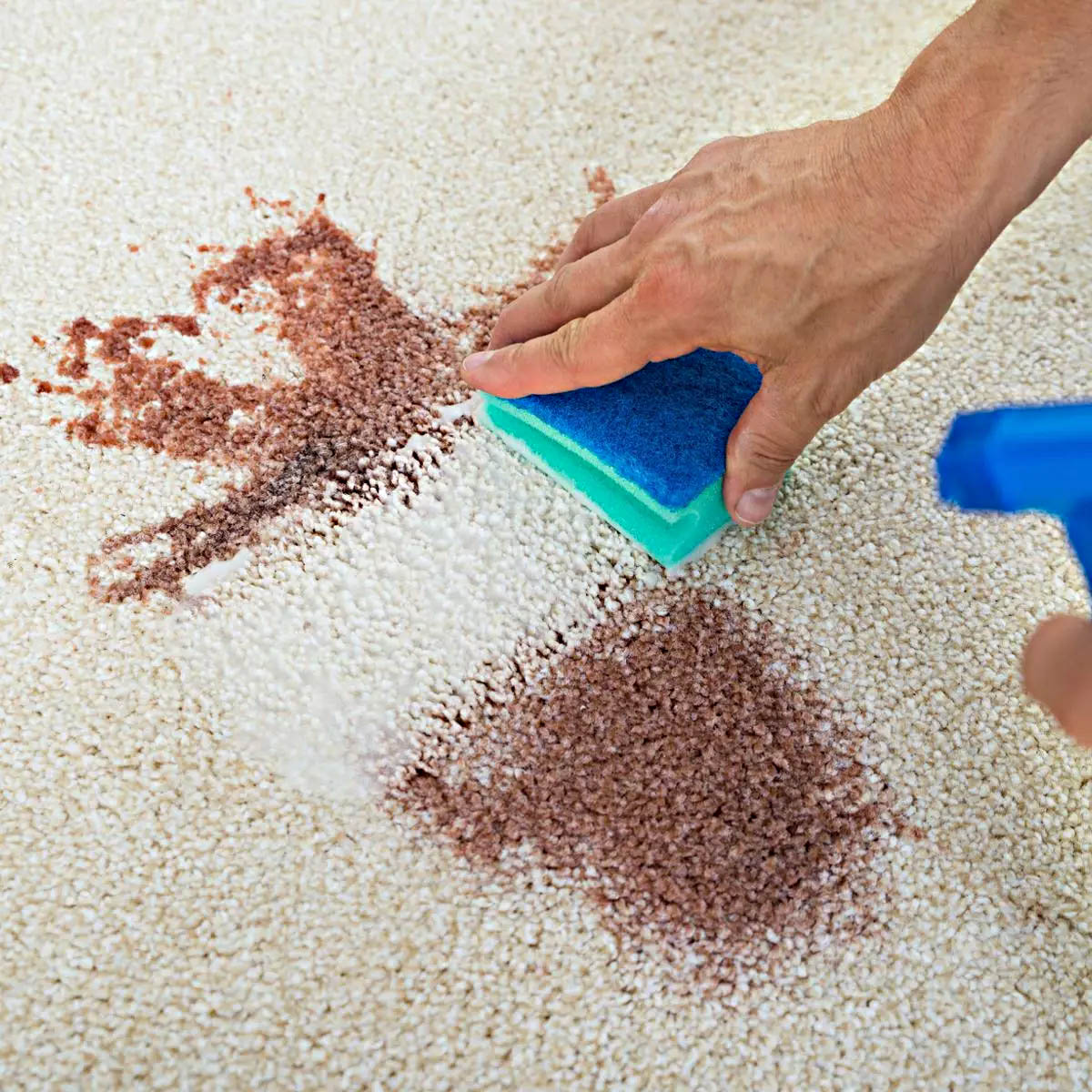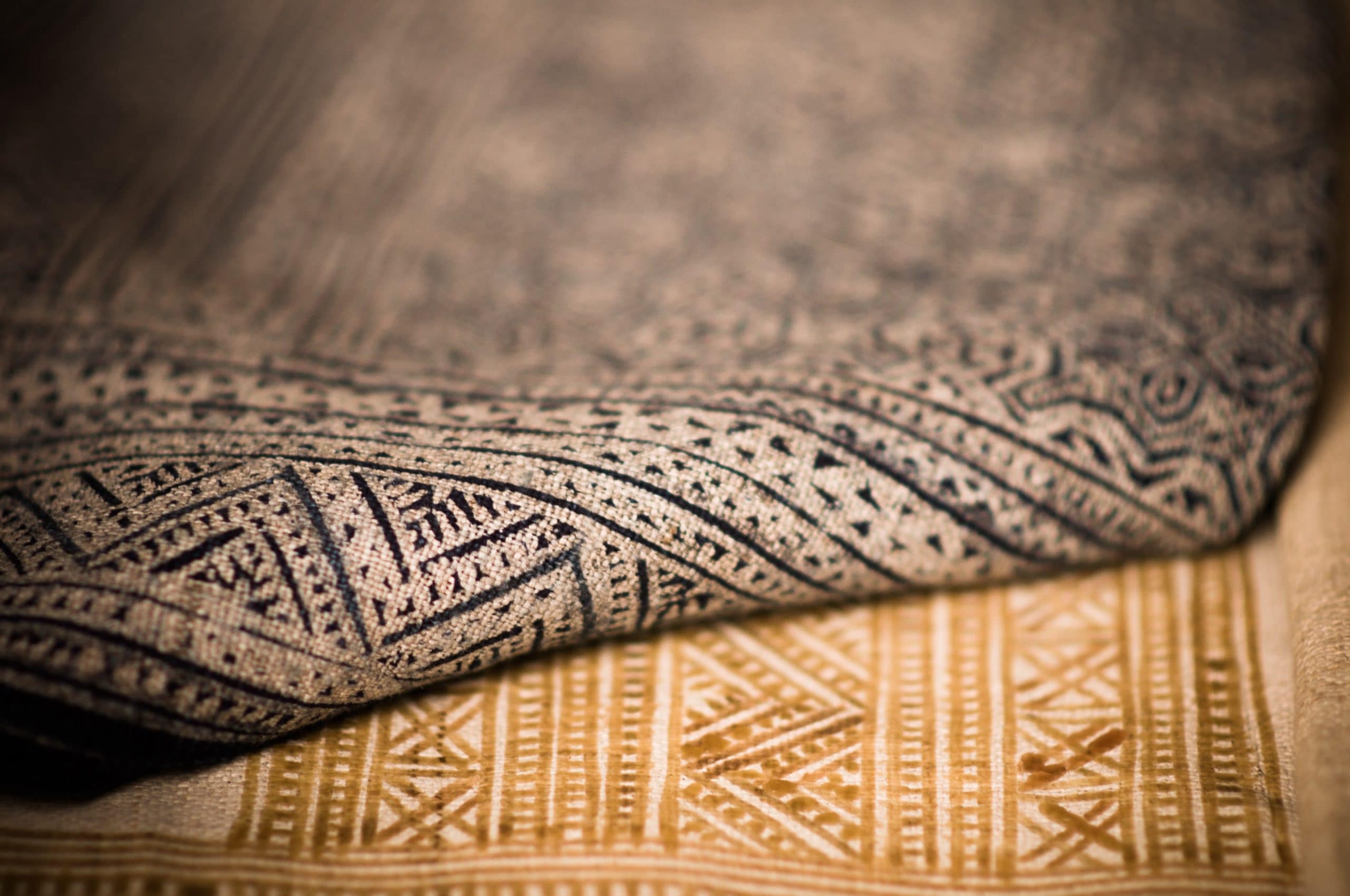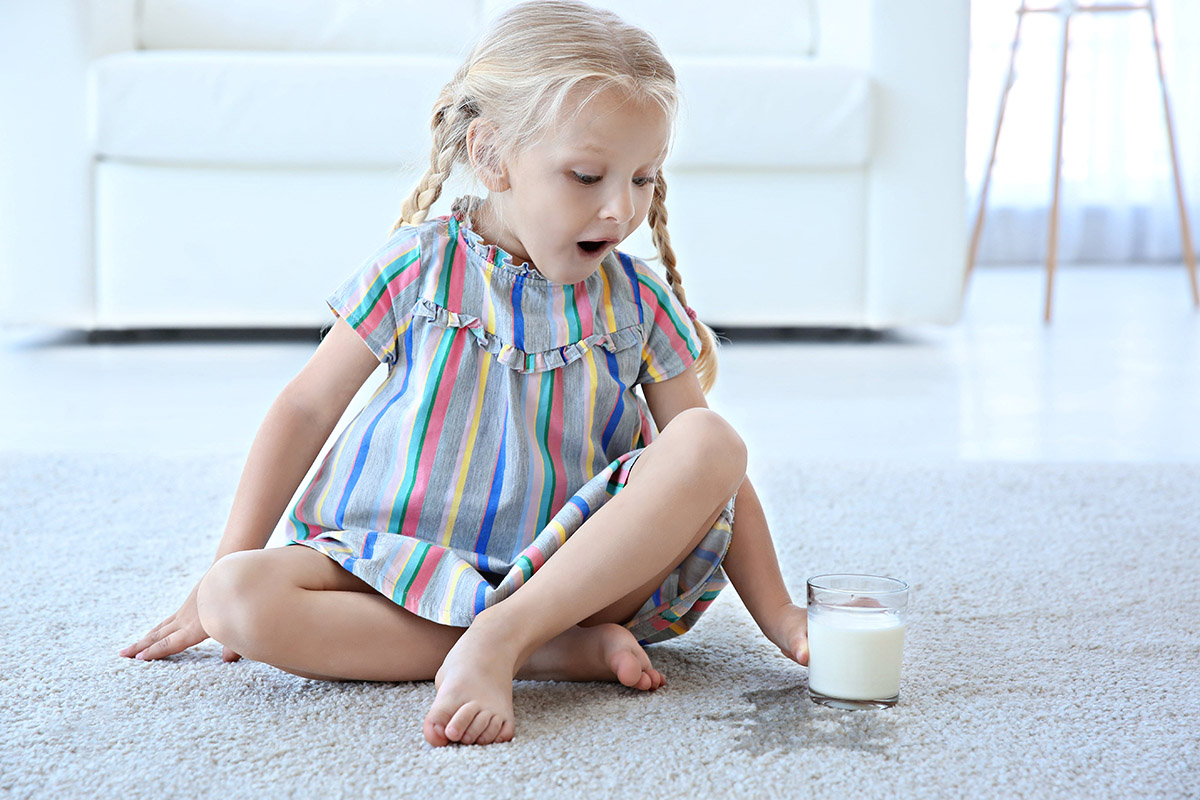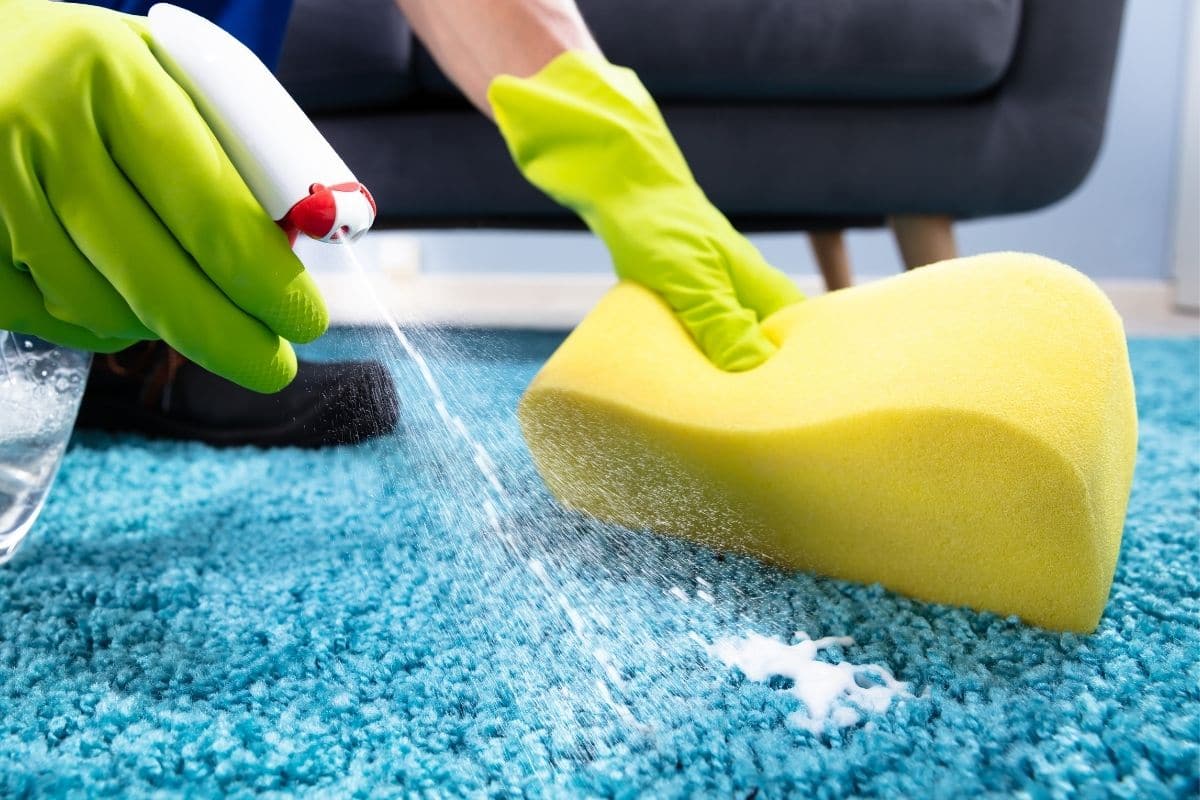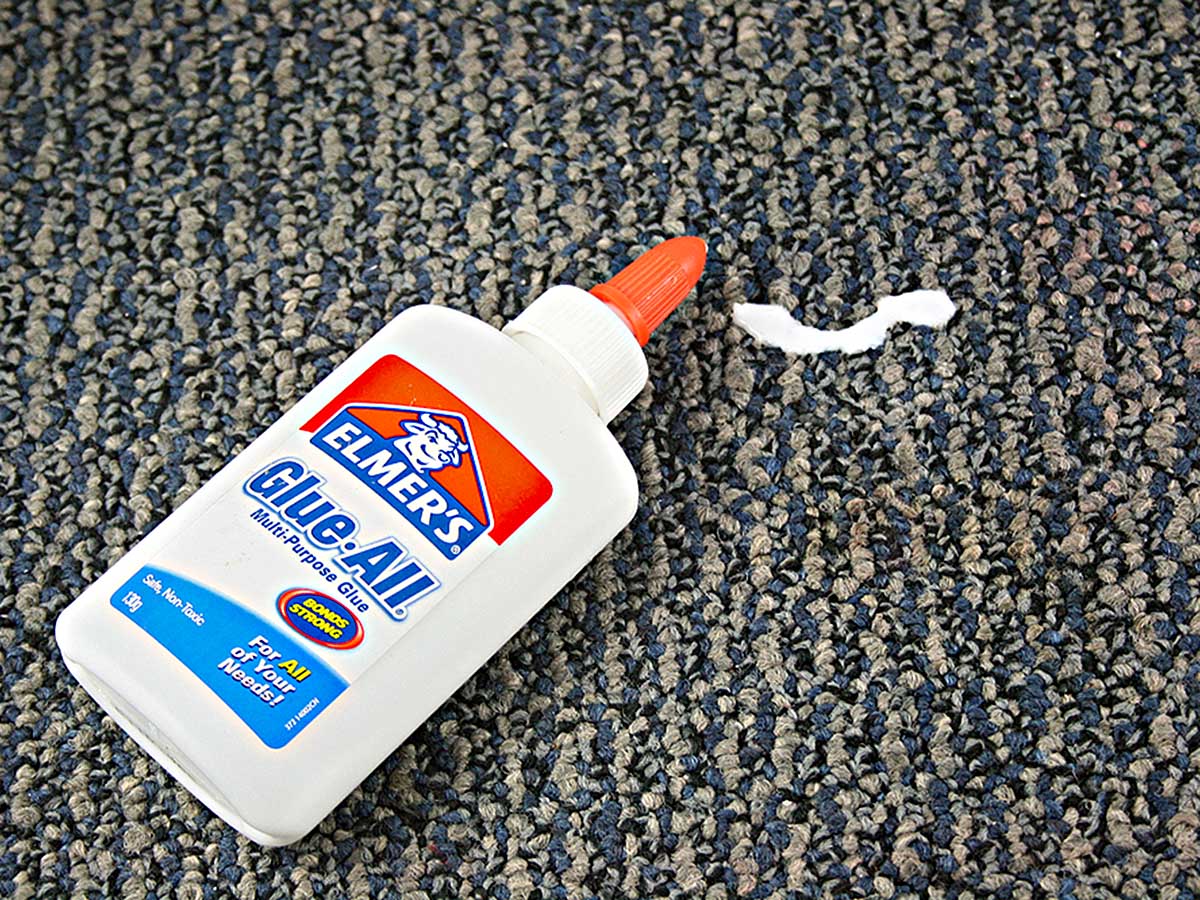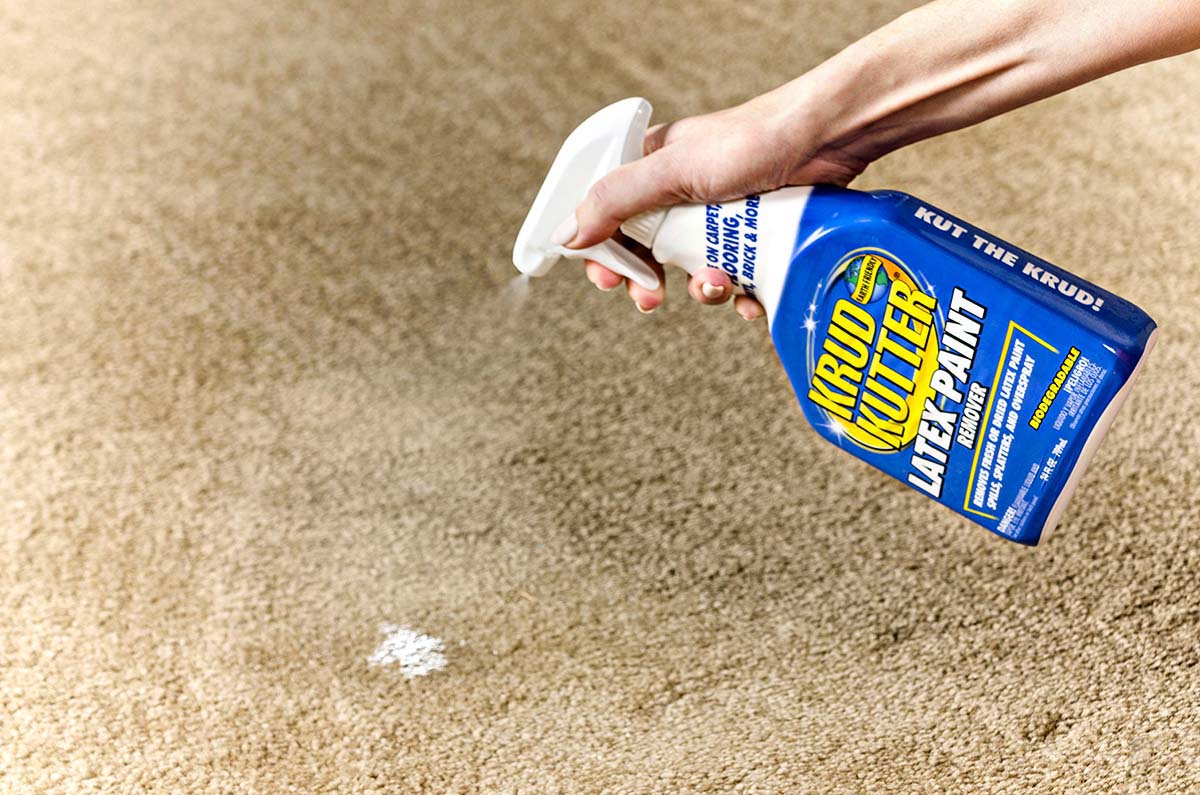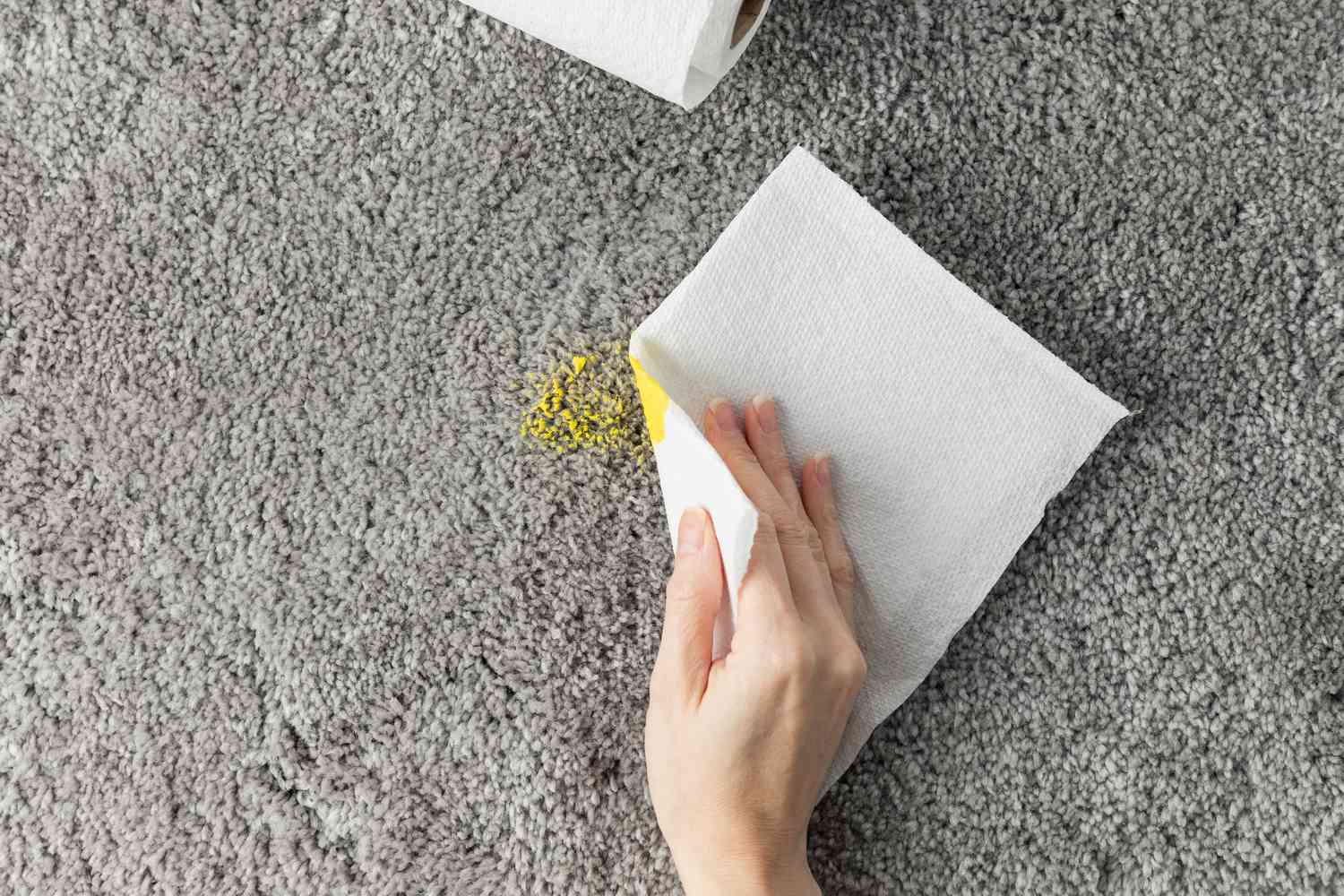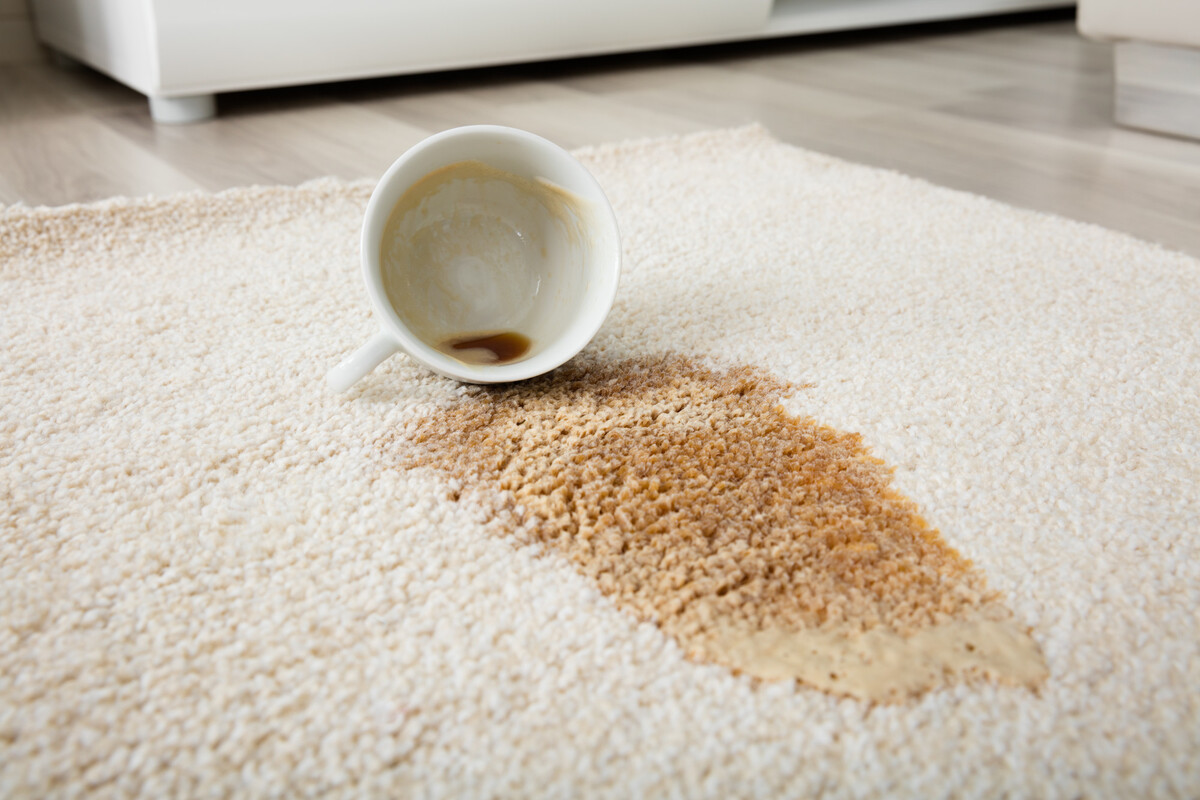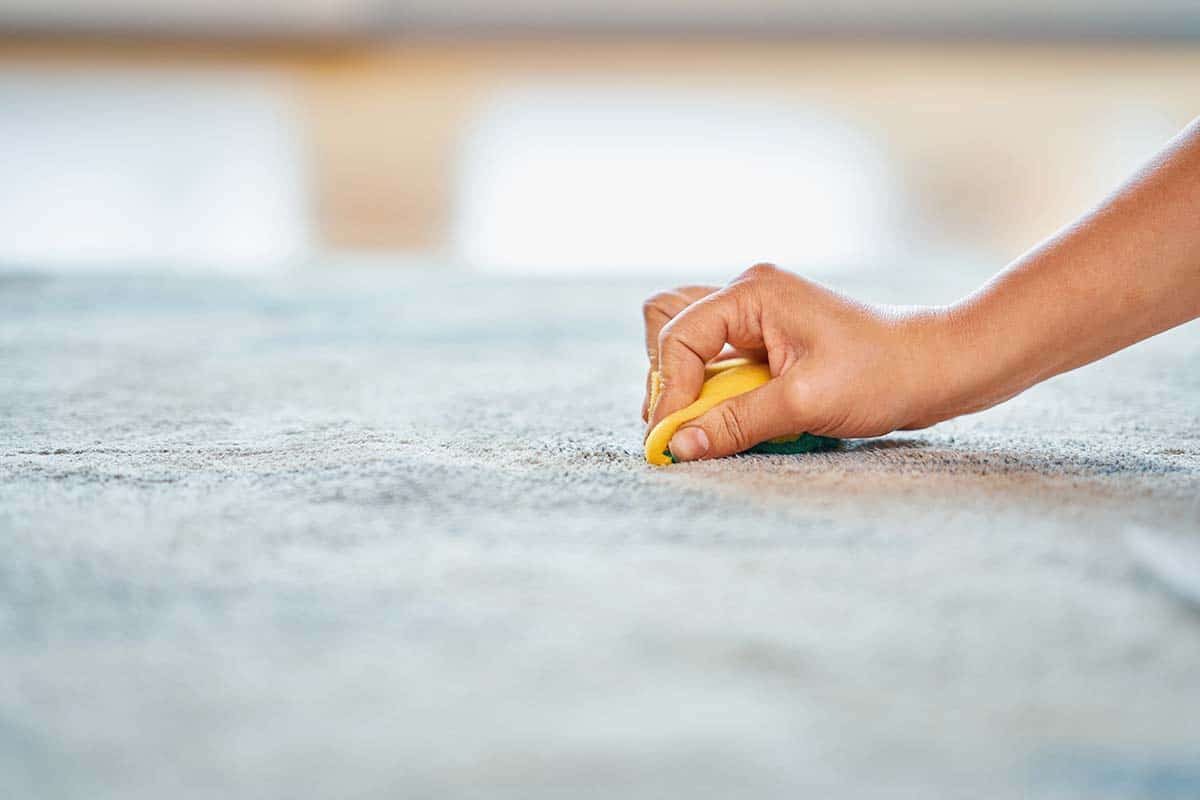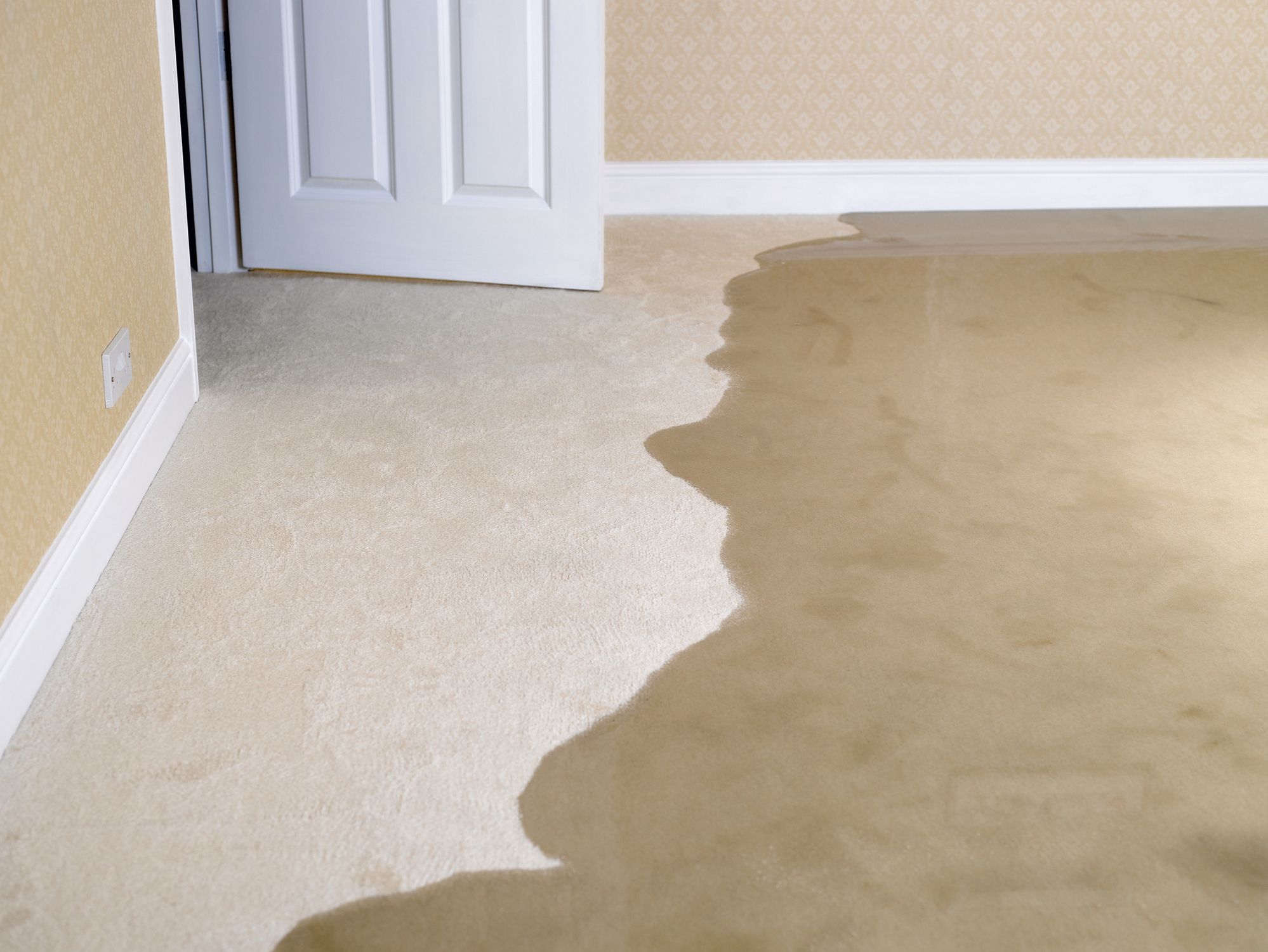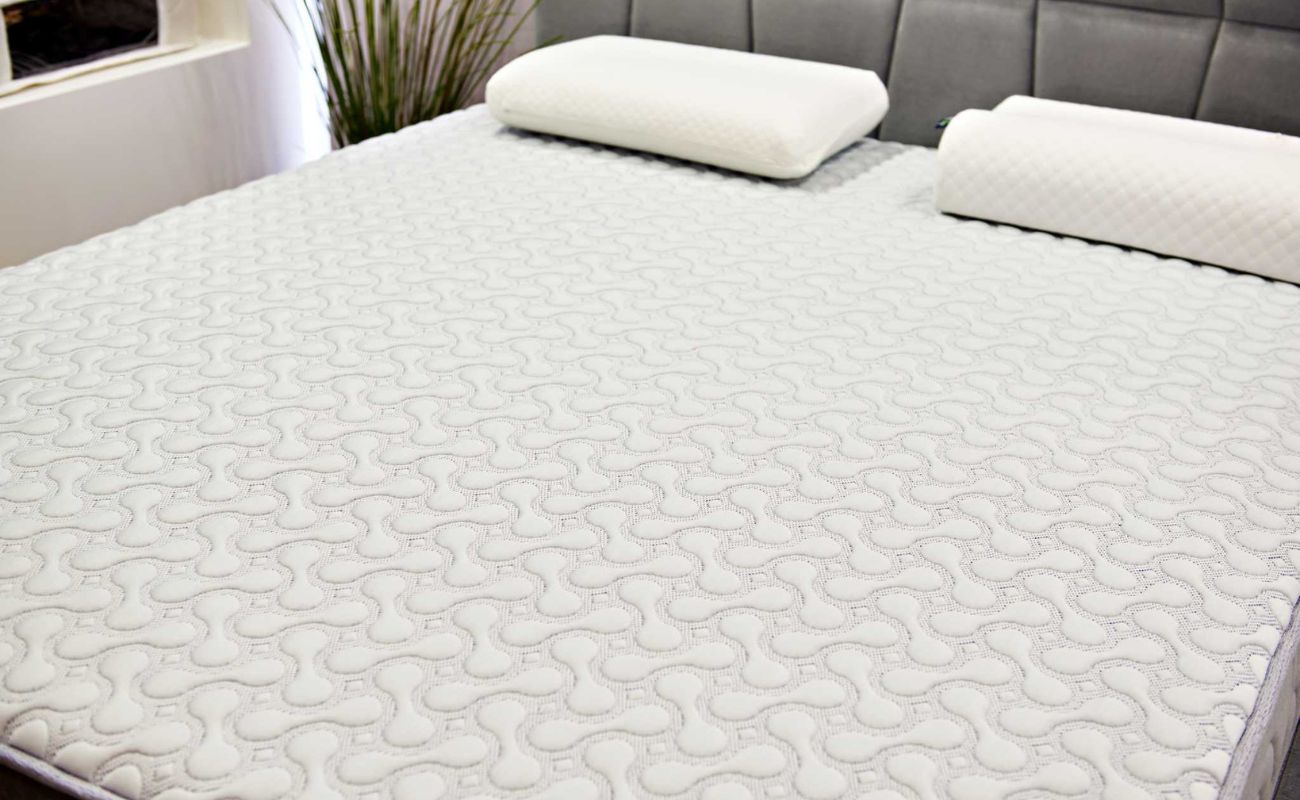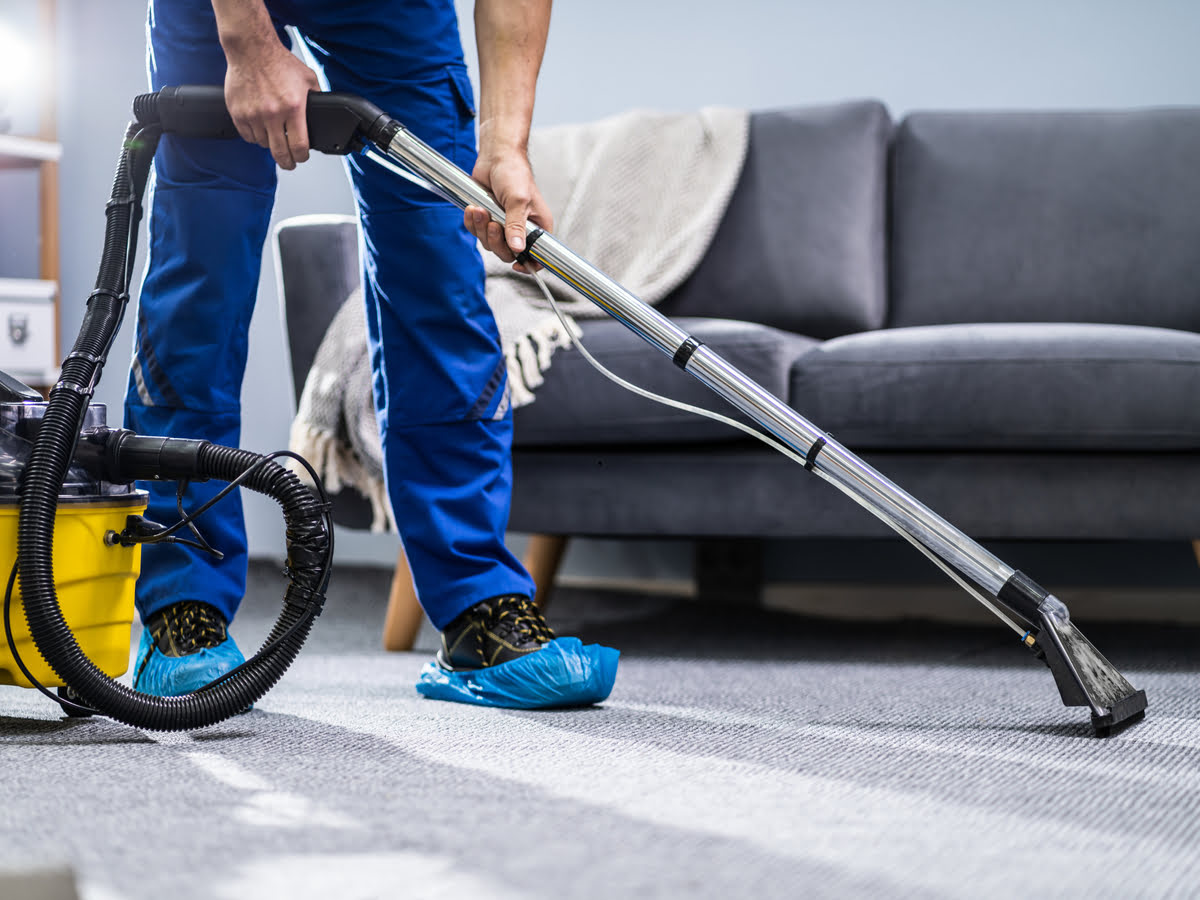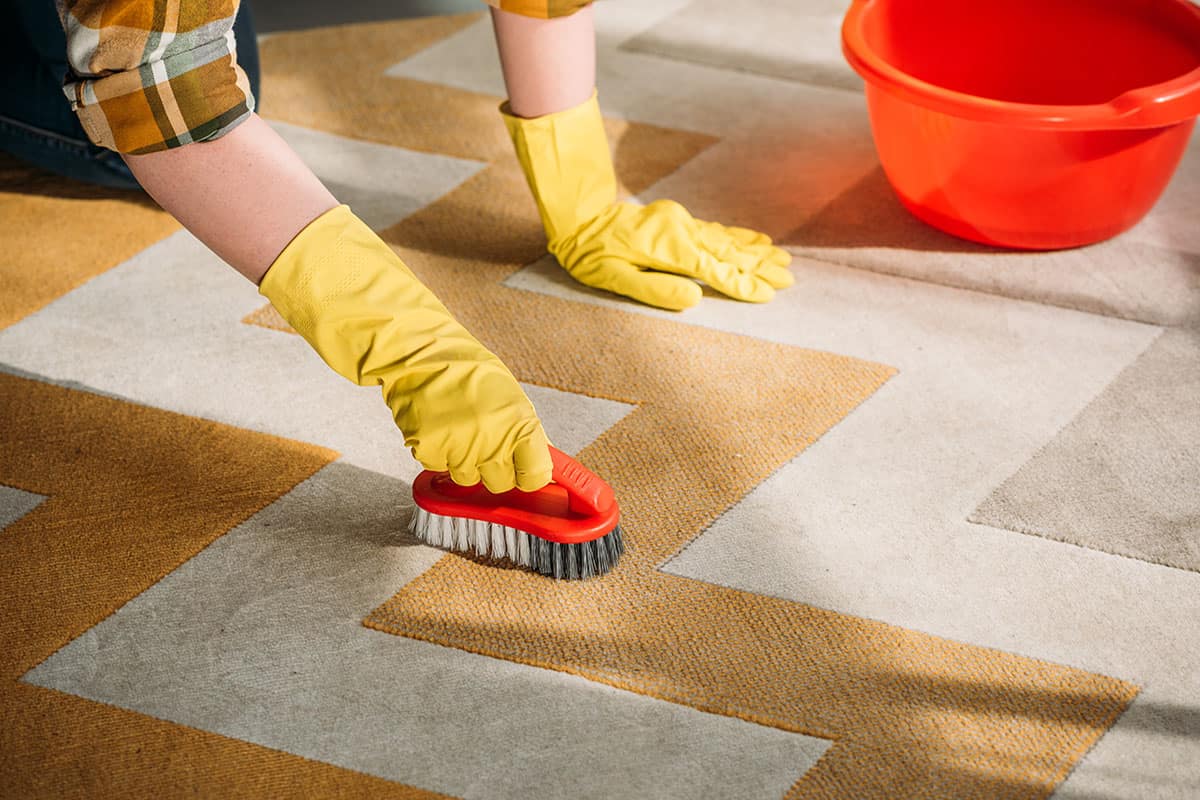

Articles
How To Get Dry Milk Out Of A Carpet
Modified: December 7, 2023
Learn effective methods for removing dry milk stains from your carpet with these informative articles. Transform your carpet and restore its pristine condition.
(Many of the links in this article redirect to a specific reviewed product. Your purchase of these products through affiliate links helps to generate commission for Storables.com, at no extra cost. Learn more)
Introduction
Having dry milk spilled on your carpet can be quite frustrating. Dry milk can easily seep into the fibers of the carpet, leaving behind a sticky residue and an unpleasant odor. If not properly treated, it can even attract dirt and bacteria, leading to further damage to your carpet. However, with the right approach and a few simple steps, you can effectively remove dry milk stains from your carpet and restore its clean and fresh appearance.
In this article, we will guide you through the process of getting dry milk out of a carpet. We will provide you with the necessary materials and a step-by-step guide to ensure successful stain removal. Whether you’re dealing with a recent spill or an old dried stain, these techniques will help you tackle the problem effectively.
Before we begin, it’s important to note that every carpet is unique, and the type of fabric and color can affect the stain removal process. It’s always a good idea to test any cleaning solution on a small, inconspicuous area of the carpet to check for any adverse reactions.
Now let’s gather the materials you’ll need and get started on removing that stubborn dry milk stain from your carpet!
Key Takeaways:
- Act quickly by blotting and vacuuming to remove dry milk stains from your carpet. Use a gentle cleaning solution and be patient during the process for effective stain removal.
- Ensure thorough drying to prevent mold and odors after successfully removing dry milk stains from your carpet. Test cleaning solutions on a small area first and seek professional help if needed.
Read more: How To Get Dried Milk Out Of A Mattress
Materials Needed
Before you begin the process of removing dry milk from your carpet, it’s important to gather the necessary materials. Having everything ready beforehand will save you time and ensure a smoother cleaning process. Here are the materials you’ll need:
- White absorbent cloths or paper towels
- Vacuum cleaner with a brush attachment
- Clean, white cloth
- Cold water
- Mild dish soap
- Spray bottle
- Soft-bristled brush or sponge
- Clean, dry towels
Make sure to use white materials to avoid any potential color transfer onto your carpet. Additionally, using mild dish soap will prevent damage to your carpet fibers and ensure safe and effective cleaning.
Once you have these materials ready, you can proceed to the step-by-step guide on removing dry milk stains from your carpet.
Step-by-Step Guide
Now that you have gathered all the materials needed, let’s go through the step-by-step process of removing dry milk stains from your carpet:
- Blotting the Area
- Vacuuming the Dry Milk
- Applying a Cleaning Solution
- Blotting with a Clean Cloth
- Removing Residue with Dish Soap
- Drying the Carpet
If the dry milk spill is fresh, start by immediately blotting the area with a white absorbent cloth or paper towel. Gently press down on the stain to absorb as much liquid as possible. Avoid rubbing the stain, as this can push the milk deeper into the carpet fibers and spread the stain.
Using a vacuum cleaner with a brush attachment, carefully vacuum over the affected area. This will help remove any loose dry milk particles and prevent them from spreading or being further ground into the carpet.
In a spray bottle, mix a few drops of mild dish soap with cold water. Gently shake the bottle to create a soapy solution. Spray the solution onto the stained area, making sure to dampen the carpet fibers without saturating them.
Using a clean, white cloth, blot the area with the cleaning solution. Press down firmly but gently, allowing the cloth to absorb the soapy residue and the milk stain. Continue blotting until the stain starts to fade.
In a small bowl, mix a few drops of mild dish soap with cold water. Dip a soft-bristled brush or sponge into the soapy solution and gently scrub the stained area. Work in circular motions, focusing on the remaining residue. Rinse the brush or sponge frequently and continue scrubbing until the stain is no longer visible.
After removing the milk stain, blot the area with a clean, dry towel to absorb excess moisture. Open windows or turn on fans to aid in the drying process. Avoid walking on the carpet until it is completely dry to prevent any re-soiling.
Following this step-by-step guide should help you successfully remove dry milk stains from your carpet. Remember to be patient, as stubborn or old stains may require multiple attempts. If the stain persists, it may be advisable to seek professional help.
Now you can enjoy a fresh, clean carpet free from dry milk stains!
Blotting the Area
When you spill dry milk on your carpet, the first step in the stain removal process is to act quickly and blot the area to prevent the milk from penetrating deeper into the carpet fibers. Here’s how to effectively blot the area:
- Start by grabbing a white absorbent cloth or a stack of paper towels.
- Gently place the cloth or paper towels over the spill and press down firmly. Avoid rubbing the stain as it can push the milk further into the carpet and spread the stain.
- Continue blotting the area until you can’t absorb any more liquid. If the cloth or paper towel becomes saturated, replace it with a fresh one and continue blotting.
- Repeat this process until you’ve removed as much of the liquid as possible. It’s important to act quickly because the longer the milk sits on the carpet, the more difficult it will be to remove.
Blotting the area helps to remove the liquid component of the stain, preventing it from soaking further into the carpet fibers. Remember to be gentle while blotting to avoid spreading the milk and causing the stain to become larger.
Once you have successfully blotted the area, you can move on to the next step in the dry milk stain removal process.
Vacuuming the Dry Milk
After blotting the area to remove as much of the liquid as possible, the next step is to vacuum the dry milk residue from the carpet. Vacuuming helps to remove any loose particles and prevent them from being ground further into the fibers. Here’s how to effectively vacuum the dry milk:
- Attach a brush attachment to your vacuum cleaner. The brush attachment is ideal for gently agitating the carpet fibers and capturing loose debris.
- Position the vacuum cleaner over the affected area, making sure the brush attachment is in contact with the carpet.
- Move the vacuum cleaner back and forth in slow, overlapping strokes. This will help to loosen and pick up the dry milk residue.
- Pay special attention to the stained area, ensuring that you cover the entire affected section.
- Continue vacuuming until you no longer see any visible dry milk particles on the carpet surface.
While vacuuming may not completely remove the stain, it plays a crucial role in removing loose debris and preventing further spread of the dry milk residue. Be thorough in your vacuuming process to ensure the best outcome.
Once you have finished vacuuming, you can proceed with the next step in the process, which involves applying a cleaning solution to further tackle the dry milk stain.
Blot the area with a clean cloth to remove as much dry milk as possible. Then, mix a solution of 1 tablespoon dish soap and 2 cups warm water, and blot the stain with the solution. Finally, rinse with clean water and blot dry.
Read more: How To Get Milk Stain Out Of A Carpet
Applying a Cleaning Solution
After blotting and vacuuming, it’s time to tackle the dry milk stain with a cleaning solution. The cleaning solution will help break down the residue and lift it from the carpet fibers. Here’s how to apply a cleaning solution effectively:
- Fill a spray bottle with cold water.
- Add a few drops of mild dish soap to the spray bottle. Be cautious not to add too much soap, as it can leave behind a residue.
- Gently shake the spray bottle to mix the water and dish soap, creating a soapy solution.
- Spray the cleaning solution directly onto the dry milk stain, making sure to dampen the carpet fibers without saturating them.
Applying the cleaning solution helps to break down the sticky residue left behind by the dry milk and prepare the stain for removal. The mild dish soap effectively cleans the carpet without causing damage.
Once you have applied the cleaning solution, move on to the next step, which involves blotting the area with a clean cloth to remove the soapy residue and lift the remaining stain.
Blotting with a Clean Cloth
After applying the cleaning solution to the dry milk stain, it’s important to blot the area with a clean cloth to remove the soapy residue and lift the remaining stain. Here’s how to effectively blot with a clean cloth:
- Take a clean, white cloth or paper towels and fold it into a thick pad.
- Place the cloth over the stained area and press down firmly but gently. Allow the cloth to absorb the soapy residue and start lifting the remaining stain.
- Continue blotting the area, replacing the cloth as needed, until you no longer see any transfer of the stain onto the cloth.
- Be patient and persistent while blotting, as it may take several attempts to completely remove the stain.
Blotting helps to lift the stain from the carpet fibers by absorbing the soapy residue and residue left behind by the dry milk. Remember to avoid rubbing the area, as this can push the stain deeper into the carpet and make it more difficult to remove.
Once you have successfully blotted the area, you can move on to the next step, which involves using a dish soap solution to further tackle any remaining residue and stain.
Removing Residue with Dish Soap
After blotting the area, there may still be some residue left behind from the dry milk stain. Using a dish soap solution can help break down the remaining residue and lift the stain from the carpet fibers. Here’s how to effectively remove residue with dish soap:
- In a small bowl, mix a few drops of mild dish soap with cold water.
- Dip a soft-bristled brush or sponge into the soapy solution.
- Gently scrub the stained area using circular motions, focusing on the remaining residue. Be careful not to scrub too vigorously to avoid damaging the carpet fibers.
- Rinse the brush or sponge frequently in clean water to remove any residue and continue scrubbing until the stain is no longer visible.
The dish soap solution helps to break down the sticky residue left behind by the dry milk, facilitating its removal from the carpet fibers. The circular scrubbing motions enable the soap to penetrate the stain and lift it away.
Once you have successfully removed the remaining residue, you can proceed to the final step, which involves drying the carpet to complete the cleaning process.
Drying the Carpet
After successfully removing the dry milk stain and residue from your carpet, it’s important to allow it to dry thoroughly. Proper drying helps prevent any remaining moisture from attracting dirt and bacteria. Here’s how to effectively dry your carpet:
- First, use a clean, dry towel or paper towels to gently blot the area and absorb any excess moisture. Press down firmly but avoid rubbing, as this can potentially spread the moisture and stain.
- Open windows or turn on fans to improve air circulation in the room. This will help expedite the drying process.
- Avoid walking on the damp carpet until it is completely dry, as this can potentially leave footprints or cause re-soiling.
- If needed, you can use a dehumidifier in the room to further reduce the moisture in the air and assist in drying the carpet.
- Regularly check the carpet for complete dryness. You can do this by gently touching the surface to ensure there is no dampness.
It’s important to allow sufficient time for the carpet to dry completely to prevent any issues such as mold growth or odor. The drying time may vary depending on the thickness of the carpet, the humidity levels in the room, and airflow. Be patient and give it ample time to dry thoroughly.
Once the carpet is fully dry, you can enjoy a fresh and clean carpet free from dry milk stains. Congratulations on successfully removing the stain and restoring the beauty of your carpet!
Read more: How To Get Sour Milk Out Of A Carpet
Conclusion
Dealing with a dry milk stain on your carpet can be a frustrating experience. However, by following the step-by-step guide outlined in this article, you can effectively remove the stain and restore the cleanliness and appearance of your carpet.
Remember to act quickly and begin by blotting the affected area to remove as much liquid as possible. Vacuuming the dry milk residue helps prevent it from spreading and becoming further embedded in the carpet fibers.
Applying a cleaning solution and blotting with a clean cloth helps break down the residue and lift the stain. Dampening the area with a dish soap solution and gently scrubbing can further aid in removing any remaining residue.
Once the stain is removed, it’s crucial to allow the carpet to dry completely by blotting and providing proper airflow in the room. This ensures that no moisture is left behind, preventing any potential issues such as mold or odors.
Remember, every carpet is unique, and it’s important to test any cleaning solution on a small, inconspicuous area of the carpet before treating the entire stain. If the stain persists or if you’re unsure about the cleaning process, it’s always best to seek professional help.
By following these steps and taking proper care, you can successfully remove dry milk stains from your carpet and maintain a clean and inviting living space.
Now, armed with this knowledge, you can confidently tackle any dry milk spills on your carpet and keep it looking fresh and pristine for years to come!
Frequently Asked Questions about How To Get Dry Milk Out Of A Carpet
Was this page helpful?
At Storables.com, we guarantee accurate and reliable information. Our content, validated by Expert Board Contributors, is crafted following stringent Editorial Policies. We're committed to providing you with well-researched, expert-backed insights for all your informational needs.
